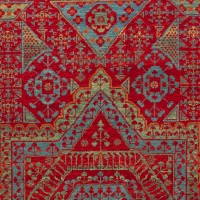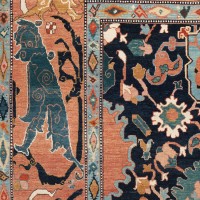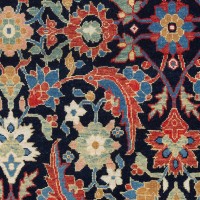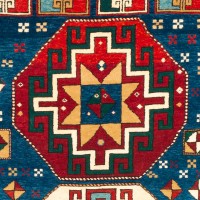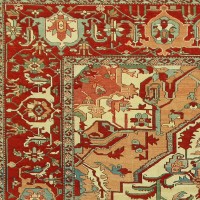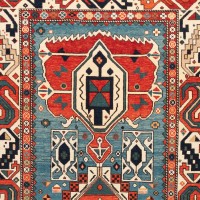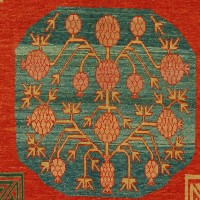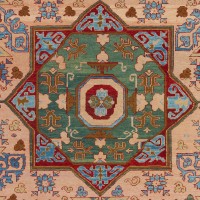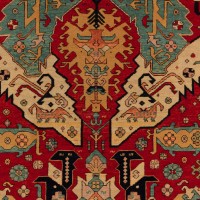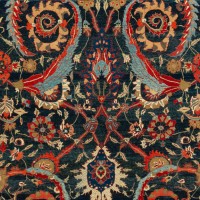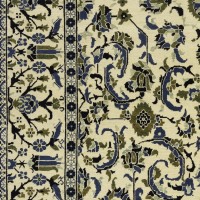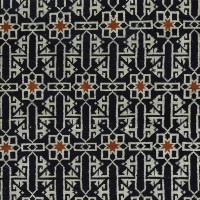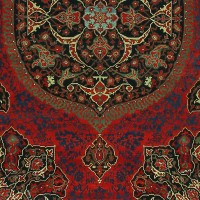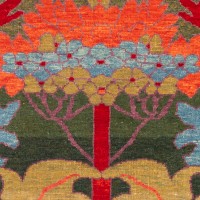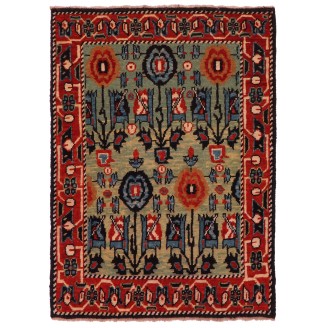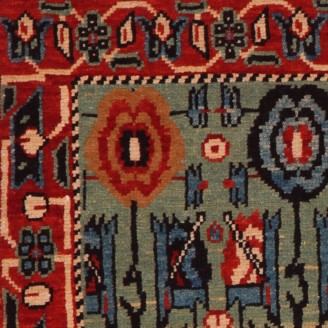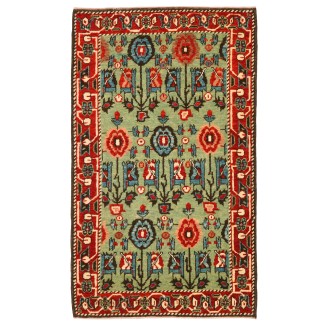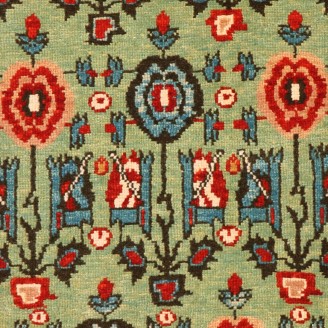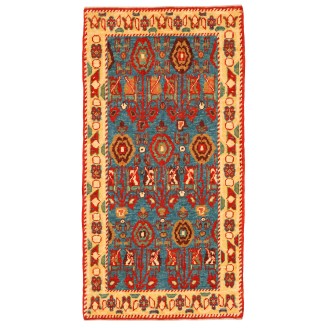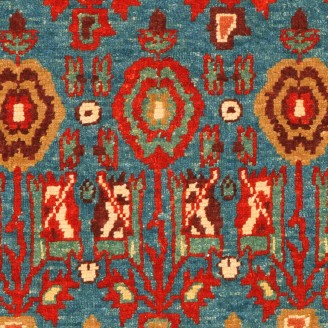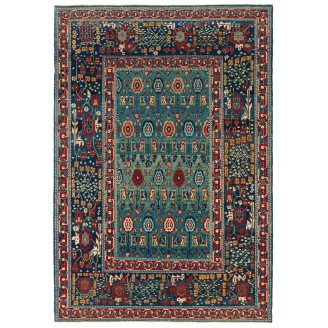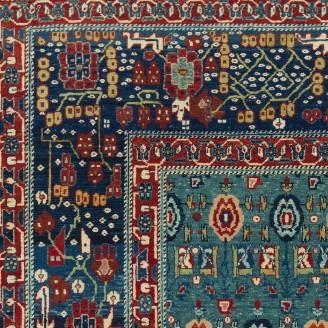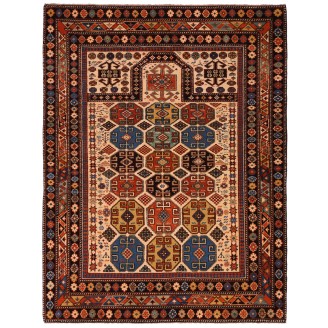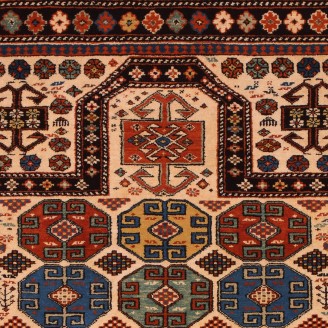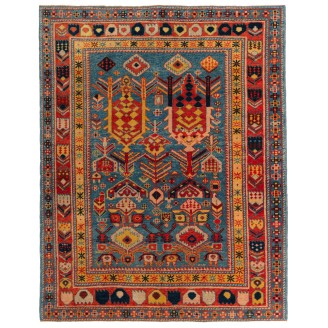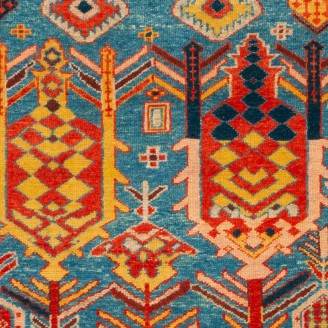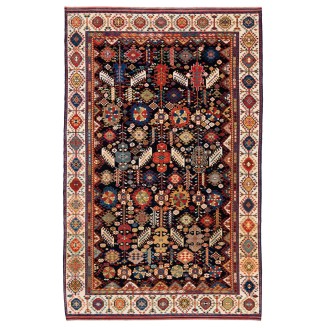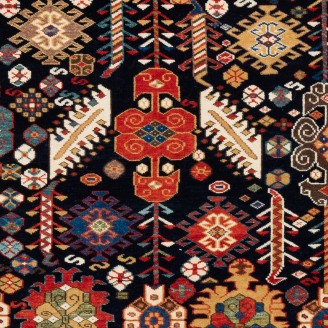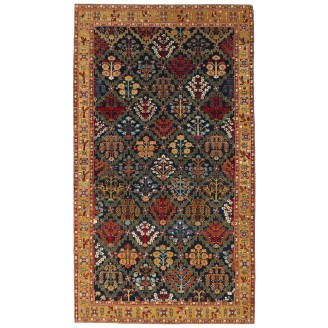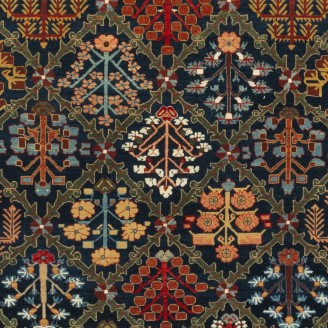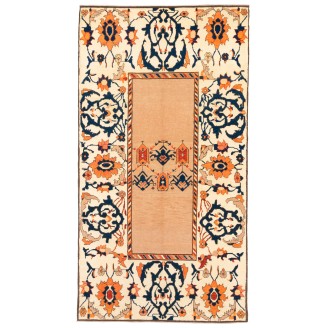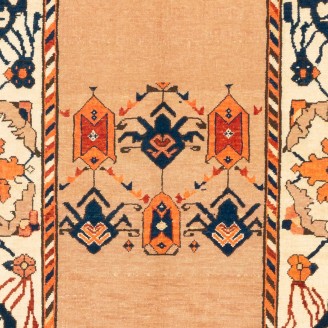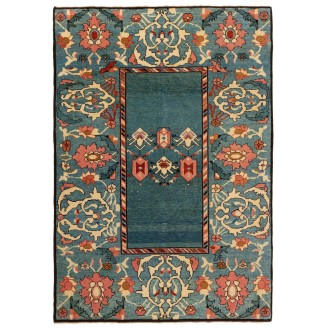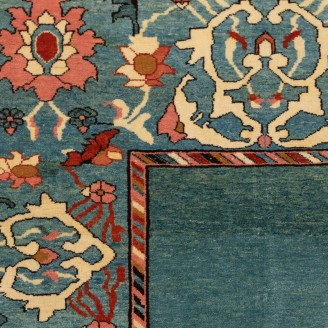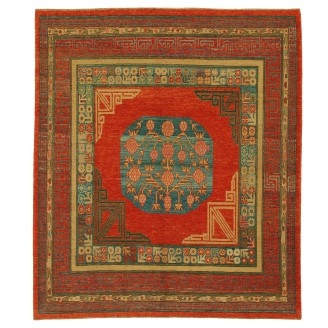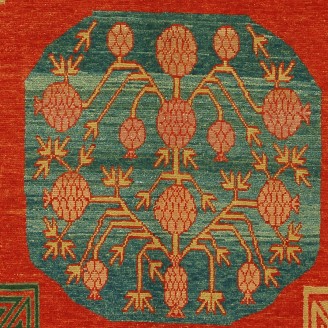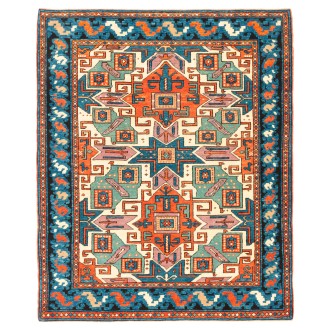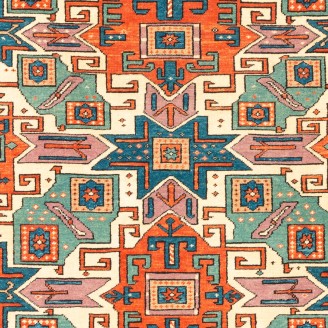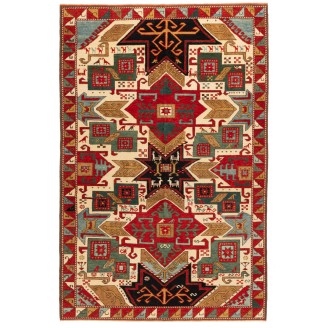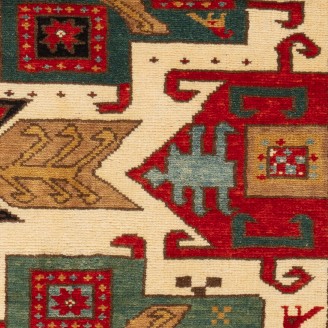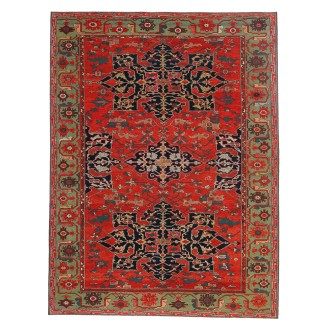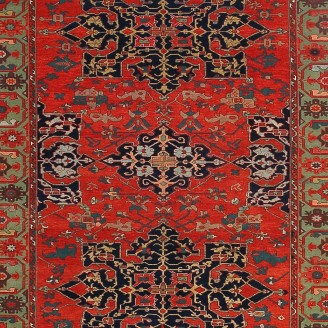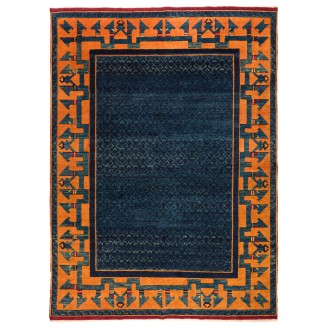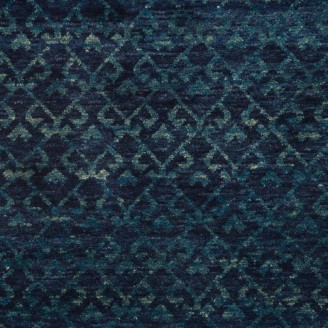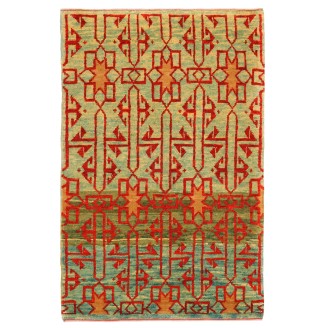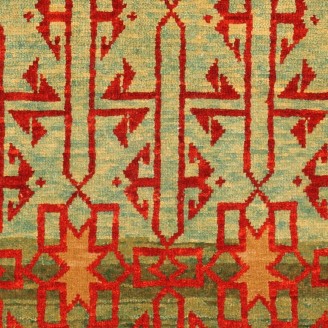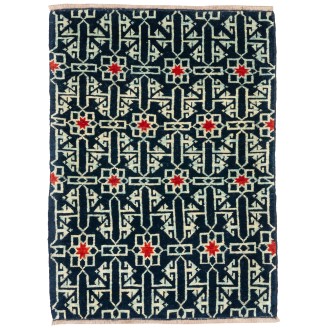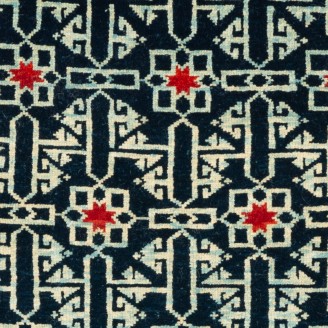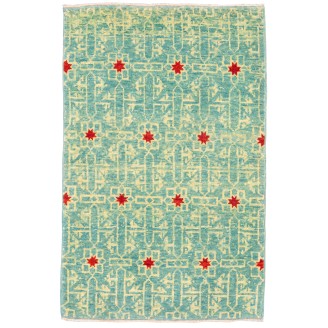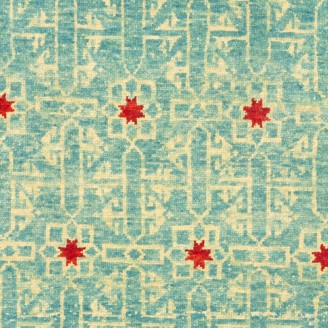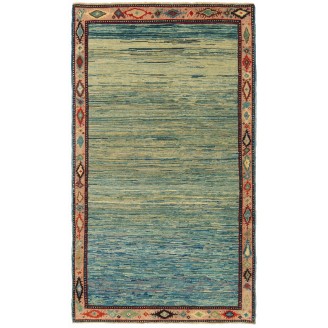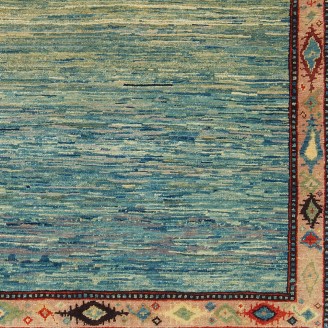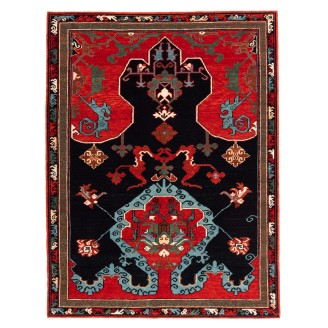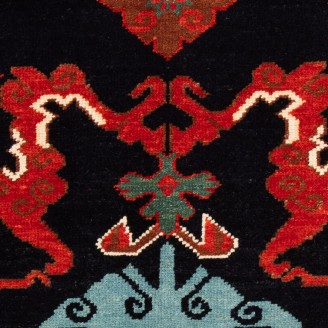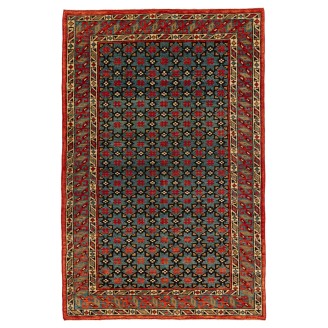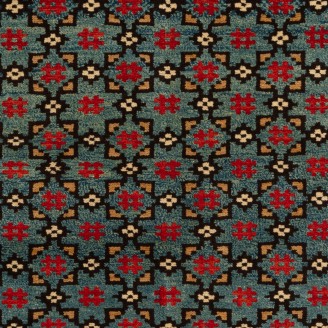Model: ART00239
Dimensions: 1'9" X 2'4"(54cm x 73cm)
The source of the rug comes from the book Antique Rugs of Kurdistan A Historical Legacy of Woven Art, James D. Burns, 2002 nr.28. This was an exclusive example of offset rows of flowers designed 18th-century rug from Senna, Eastern Kurdistan area. This example is special because the flowers are well..
Price:
$825
Ex Tax:$825
Model: ART00240
Dimensions: 1'7" X 2'9"(50cm x 84cm)
The source of the rug comes from the book Antique Rugs of Kurdistan A Historical Legacy of Woven Art, James D. Burns, 2002 nr.28. This was an exclusive example of offset rows of flowers designed 18th-century rug from Senna, Eastern Kurdistan area. This example is special because the flowers are well..
Price:
$825
Ex Tax:$825
Model: ART00211
Dimensions: 1'9" X 3'5"(54cm x 105cm)
The source of the rug comes from the book Antique Rugs of Kurdistan A Historical Legacy of Woven Art, James D. Burns, 2002 nr.28. This was an exclusive example of offset rows of flowers designed 18th-century rug from Senna, Eastern Kurdistan area. This example is special because the flowers are well..
Price:
$825
Ex Tax:$825
Model: ART00484
Dimensions: 4'10" X 7'1"(149cm x 217cm)
The source of the rug comes from the book Antique Rugs of Kurdistan A Historical Legacy of Woven Art, James D. Burns, 2002 nr.28. This was an exclusive example of offset rows of flowers designed for 18th-century rug from Senna, Eastern Kurdistan area. This example is special because the flowers are ..
Price:
$6,100
Ex Tax:$6,100
Model: ART00386
Dimensions: 4'6" X 5'10"(138cm x 178cm)
The source of the rug comes from the book Oriental Rugs Volume 1 Caucasian, Ian Bennett, Oriental Textile Press, Aberdeen 1993, pg.184. This is a multiple octagon medallion design prayer rug from the late 19th century, Shirvan region, Caucasus area. Shirvan is one of the principal weaving areas of t..
Price:
$2,500
Ex Tax:$2,500
Model: ART00453
Dimensions: 4'4" X 5'5"(133cm x 166cm)
This is an unusual stylized version of the Caucasian shield-like palmettes design rug from the late 19th century, Shirvan region, Caucasus area. Shirvan is one of the principal weaving areas of the Caucasus, stretching from the central east coast some three or four hundred kilometers inland. Located..
Price:
$2,500
Ex Tax:$2,500
Model: ARTK0030
Dimensions: 5'1" X 7'8"(156cm x 236cm)
This is a very colourful, dramatic and unusual design rug from the late 19th century, Shirvan region, Caucasus area. Shirvan is one of the principal weaving areas of the Caucasus, stretching from the central east coast some three or four hundred kilometres inland. Located within it are several towns..
Price:
$0
Ex Tax:$0
Model: ART00309
Dimensions: 7'10" X 13'9"(240cm x 421cm)
The source of the rug comes from the book Antique Rugs of Kurdistan A Historical Legacy of Woven Art, James D. Burns, 2002 nr.6. This is one of the most popular and ubiquitous lattice designs of 18th-century rugs from Koliya'i, Southern Kurdistan area. Any danger of monotony is overcome both by the ..
Price:
$27,000
Ex Tax:$27,000
Model: ART00220
Dimensions: 3'8" X 6'9"(113cm x 208cm)
The source of the rug comes from the book Antique Rugs of Kurdistan A Historical Legacy of Woven Art, James D. Burns, 2002 nr.9. This rug is presumably made by Kurds of the Ahl-i-Haqq (Yarsani) region, a sect of the 'Cult of Angels', attributed to the village of Kandula in Southern Kurdistan, southw..
Price:
$4,300
Ex Tax:$4,300
Model: ART00307
Dimensions: 3'8" X 5'3"(114cm x 161cm)
The source of the rug comes from the book Antique Rugs of Kurdistan A Historical Legacy of Woven Art, James D. Burns, 2002 nr.9. This rug is presumably made by Kurds of the Ahl-i-Haqq (Yarsani) region, a sect of the 'Cult of Angels', attributed to the village of Kandula in Southern Kurdistan, southw..
Price:
$4,400
Ex Tax:$4,400
Model: ARTW0010
Dimensions: 6'4" X 7'3"(194cm x 222cm)
The source of the rug comes from the book Hali Magazine 2014 Issue 181 pg.90. This is a square mat shape pomegranate tree medallion design rug from the 18th century in the Tarim Basim region, Central Asia area. This pattern has been linked to the tree of life symbol, which is not inconceivable as sy..
Price:
$0
Ex Tax:$0
Model: ART00397
Dimensions: 4'0" X 4'10"(123cm x 148cm)
The source of the rug comes from the book Orient Star - A Carpet Collection, E. Heinrich Kirchheim, Hali Publications Ltd, 1993 nr.2. This is the best-known example of a Star Kazaks rug from the Mid 19th century from the Central Caucasus area. Star Kazak rugs are considered to be the most desirable ..
Price:
$2,100
Ex Tax:$2,100
Model: ART00054
Dimensions: 4'5" X 6'9"(137cm x 206cm)
The source of the rug comes from the book Orient Star - A Carpet Collection, E. Heinrich Kirchheim, Hali Publications Ltd, 1993 nr.1. This is supposed to represent the most 'authentic' version of the Star Kazaks design rug from the early 19th century from the Central Caucasus area. Star Kazak rugs a..
Price:
$6,400
Ex Tax:$6,400
Model: ARTW0021
Dimensions: 7'4" X 9'9"(226cm x 299cm)
The source of the carpet comes from the book How to Read – Islamic Carpets, Walter B. Denny, The Metropolitan Museum of Art, New York 2014 fig.46-47 and Orientel Rugs, Volume 4 Turkish, Kurt Zipper and Claudia Fritzsche, Antique Collectors' Club, 1989 nr.82 and Antique Rugs from the Near East, Wilhe..
Price:
$0
Ex Tax:$0
Model: ARTK0022
Dimensions: 8'5" X 6'0"(259cm x 184cm)
The source of carpet comes from the book Orient Stars Collection, Anatolian Tribal Rugs 1050-1750, Michael Franses, Hali Publications Ltd, 2021 fig.21. This 13th-century carpet is from probably the Konya region, central Anatolia, circa 1200-1300 (C 1290-1420). It is exhibited at the Museum of Turkis..
Price:
$0
Ex Tax:$0
Model: ART00259
Dimensions: 1'9" X 2'8"(54cm x 82cm)
The source of carpet comes from the book Orient Stars Collection, Anatolian Tribal Rugs 1050-1750, Michael Franses, Hali Publications Ltd, 2021 fig.23. This 13th-century carpet is from probably the Konya region, central Anatolia, circa 1200-1300 (C 1290-1420). It is exhibited at the Museum of Turkis..
Price:
$825
Ex Tax:$825
Model: ART00262
Dimensions: 1'9" X 2'4"(54cm x 73cm)
The source of carpet comes from the book Orient Stars Collection, Anatolian Tribal Rugs 1050-1750, Michael Franses, Hali Publications Ltd, 2021 fig.23. This 13th-century carpet is from probably the Konya region, central Anatolia, circa 1200-1300 (C 1290-1420). It is exhibited at the Museum of Turkis..
Price:
$600
Ex Tax:$600
Model: ART00263
Dimensions: 1'8" X 2'7"(52cm x 79cm)
The source of carpet comes from the book Orient Stars Collection, Anatolian Tribal Rugs 1050-1750, Michael Franses, Hali Publications Ltd, 2021 fig.23. This 13th-century carpet is from probably the Konya region, central Anatolia, circa 1200-1300 (C 1290-1420). It is exhibited at the Museum of Turkis..
Price:
$825
Ex Tax:$825
Model: ART00187
Dimensions: 3'3" X 5'9"(101cm x 177cm)
This unique design rug is interpreted by our designers with a mixture of Ararat Rugs’ soft blue tone natural dyed hand-spun yarns.Color summary: 11 colors in total, most used 4 colors are; Mix of Blue Yarns Melancholy 122 (Spurge - Madder Root) Dark Brown 316 (No Dye) Imperial Red 415 (Madder..
Price:
$2,000
Ex Tax:$2,000
Model: ARTK0039
Dimensions: 4'3" X 5'6"(130cm x 168cm)
The source of the rug comes from the book Orient Stars Collection, Anatolian Tribal Rugs 1050-1750, Michael Franses, Hali Publications Ltd, 2021 fig.189 and Antique Rugs from the Near East, Wilhelm von Bode and Ernst Kühnel, Klinkhardt & Biermann, Berlin 1958, pg.49 and Orientel Rugs, Volume 4 Turki..
Price:
$0
Ex Tax:$0
Model: ART00251
Dimensions: 3'5" X 5'1"(105cm x 157cm)
The source of carpet comes from the book Turkish Carpets from the 13th - 18th centuries, Ahmet Ertuğ, 1996 pl.16. This 15th-century carpet is from Ulu Mosque, Divrigi Sivas region, central Anatolia. The Seljuk period marks one of the highest points in art and architecture in carpets Anatolia. It is ..
Price:
$2,000
Ex Tax:$2,000
